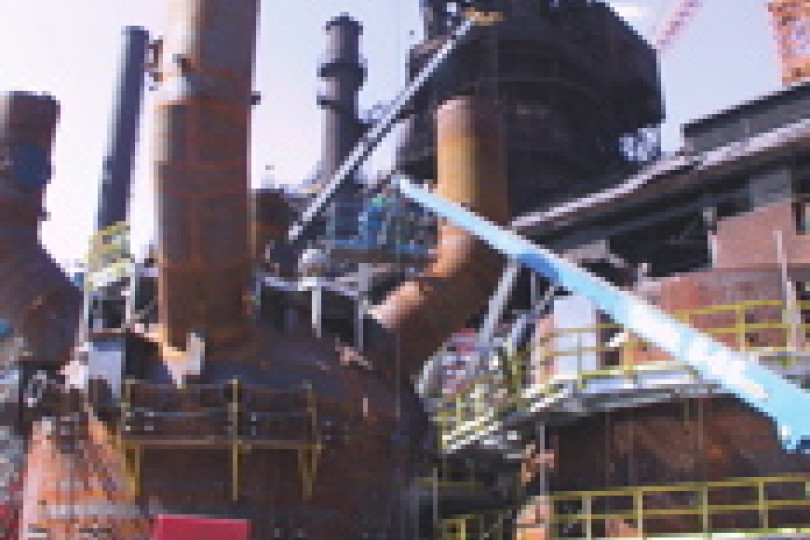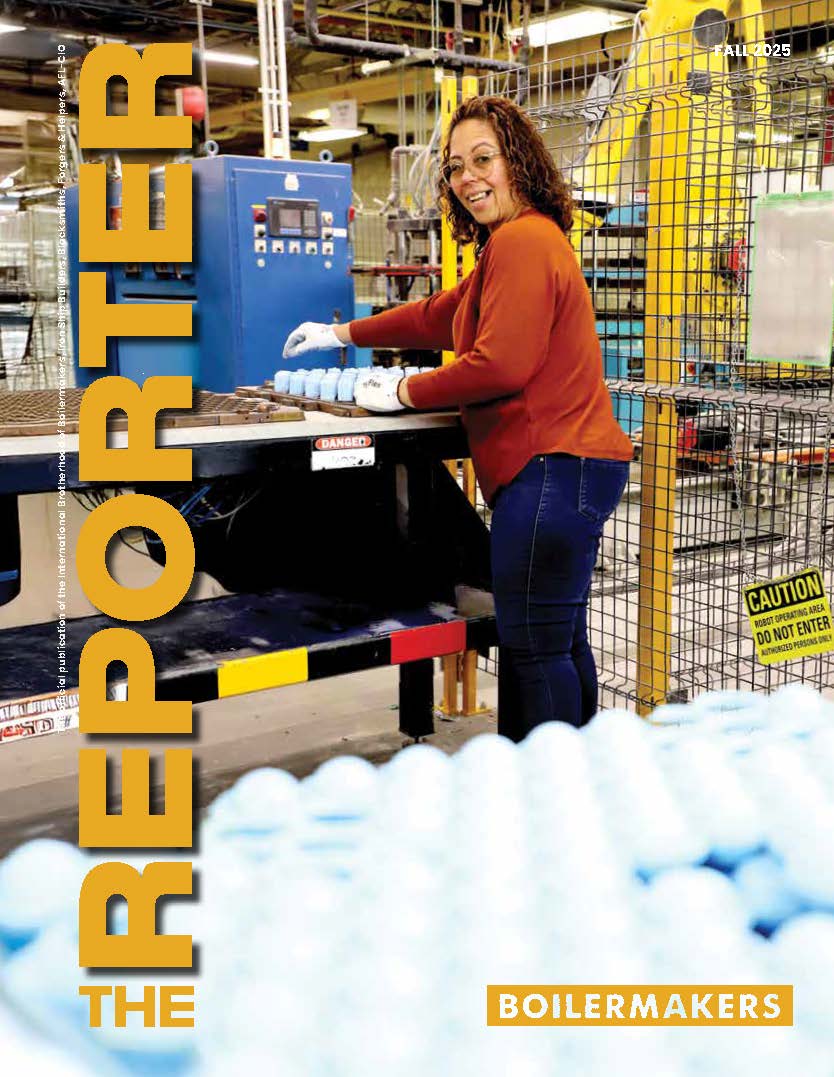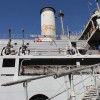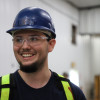Crews work 1.4 million man-hours with no serious injuries
ABOUT 250 BOILERMAKERS — members of Local 169 (Detroit) and travelers from other Boilermaker lodges — set a new standard for steelmakers worldwide when they removed and replaced a “C” blast furnace in record-setting time.
According to Marty Mulcahy of the Building Tradesman, “steelmakers from around the world were watching this project, wondering if an entire 59-year-old blast furnace could be dismantled and then replaced during the ambitious time-frame. The answer was ‘yes’: Fire was put in the belly of the replacement furnace on Oct. 17, three days ahead of schedule.”
Working with other union building trades members, Boilermakers did a complete tear-down and re-build of the blast furnace, which included building the stove and dust collector.
“Boilermakers rose to the occasion and brought the job in three days early,” said L-169 BM-ST Anthony Jacobs. “I was extremely happy with our apprentices’ performance on the job. They worked 97 12-hour days straight and were a major factor in the success of this job.”
Working around the clock, the “C” blast furnace at SeverStal North America’s Ford Rouge site in Dearborn, Mich., was completed on budget, and ahead of the 100-day schedule. Over 1.4 million man-hours were worked with no serious injuries.
Graycor was the general contractor on the project, along with Metro Industrial, Power Process Piping, and Triangle Electric. At peak employment, over 1,000 hardhats were on the job.
SeverStal project manager Keith Kahl said, “Everyone in the industry is asking ‘How did you do it?’ About 10 or 12 people told us they couldn’t believe the job done by this work force. The building trades did very well out here. They said we couldn’t get it done in 100 days; we got it done early. It was an unprecedented job.”
Andy Payne of Metro Industrial Contracting said, “This kind of schedule has never been successful before. I think we owe our success to good planning, proper scheduling and constructability, and the great efforts put forth by the building trades. If something didn’t fit, the tradesmen made it fit. It was a real team effort, and from the very beginning, the people out here took pride in their work.”
Getting the job done
UNION MEMBERS BEGAN to tear down the old blast furnace at the steelmaking operation last June. It took about three weeks to dismantle the old “C” furnace, most of which dated back to the late 1940s. Only the old support columns were incorporated into the rebuilt furnace.
The new furnace is cleaner and more environmentally friendly. According to a SeverStal publication, engineering manager Dave Morris said the new furnace will “utilize state-of-the-art technologies that will make it the most efficient and productive blast furnace in the world.” It is now producing over 4,500 tons of pig iron a day, twice what was expected at start up.
Morris said the new furnace has less polluting emissions, less operating costs, and increased production over the old furnace. Energy consumption is also considerably less, he said, as the new furnace uses pulverized coal as fuel instead of costlier natural gas.
A blast furnace operates at about 2,800 degrees. It is the first step in removing impurities and producing steel from iron ore. Pig iron that is produced in a blast furnace is taken to a basic oxygen furnace, and then refined into a higher grade of steel.
Morris said dismantling the old furnace was probably the most complex aspect of the project. It was taken down in multiple components. The final phase of demolition was the removal of residual solidified iron in the furnace, called the “salamander.” It was a block of iron 29 feet in diameter and four feet thick, weighing 450 tons. Dynamite was used to fracture the mass of iron.
Most of the new furnace sections were assembled on the ground in front of the old furnace and then lifted into place. Some sections were assembled on a barge, floated to the plant’s boat slip, and transported to the furnace. The largest pre-assembled section weighed 500 tons, making it one of the heaviest lifts in North America in 2007.
The project also involved constructing a new two-million-pound cast house, which was pre-assembled nearby. It took one day to roll the structure into place next to the blast furnace.
The new furnace is part of a $750 million expenditure by SeverStal to enhance its steelmaking operations. Steelmaking operations continued during construction, as SeverStal utilized its “B” blast furnace on site — which dates to 1921.
Photos and Story Source: Marty Mulcahy, The Building Tradesman







